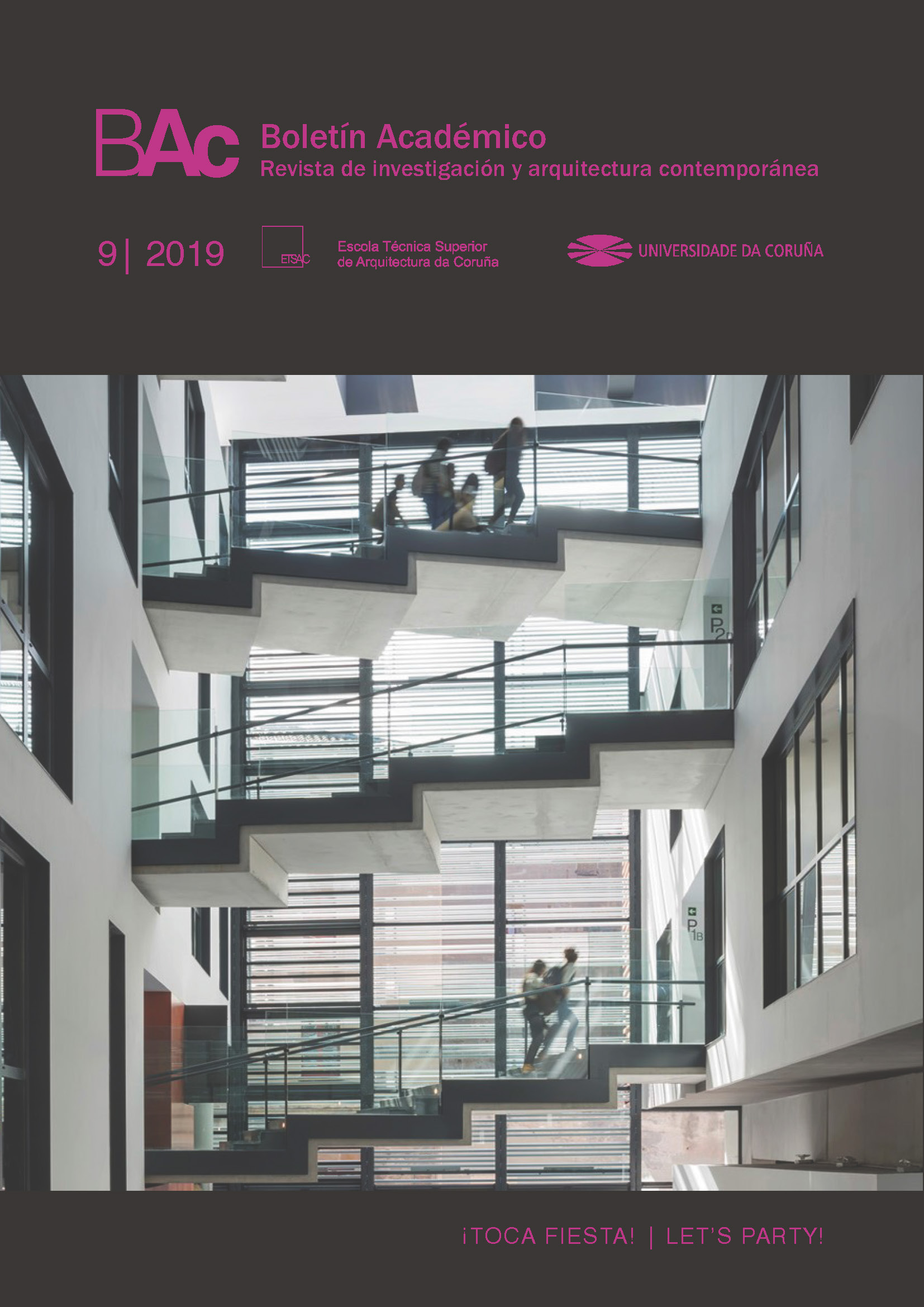M. Paul Friedberg Sceneries for the play in urban habitats
Main Article Content
Abstract
In the 60s, the landscape architect M. Paul Friedberg renewed the playgrounds for children in a personal and particular way in New York City. For this renewal, he founded on the observation of the children’s excitement and the dynamism of the people when using the street and the square. The article highlights his concept of playground that offers different play styles, unpredictable movements and behavioural dynamics, which allowed him to explore the landscape and the architectural form of the children’s play spaces. The adding of a complete set of auxiliary facilities to promote the play led to imagine other possibilities of public space. These play areas turned out to be sceneries in urban habitats, where the interaction and juxtaposition of elementary architectures created environments of learning, discovery and personal development in which the time of the party resulted from the free use of space.
Keywords:
Downloads
Article Details
References
Bang Larsen, Lars et al, Isamu Noguchi: Playscapes. México D.F.: RM/Museo Tamayo Arte Contemporáneo. 2016.
Biondo, Brenda. Once upon a playground: a celebration of classic American playgrounds, 1920–1975. Lebanon, NH: ForeEdge, 2014.
Birnbaum, Charles A., James Sheldon y Shirley Veenema. Pioneers of American Landscape Design Oral History Series: M. Paul Friedberg Interview Transcript. Nueva York: The Cultural Landscape Foundation, 2009.
Borja-Villel, Manuel (Ed.). Playgrounds: Reinventar la Plaza. Madrid: Museo Nacional Centro de Arte Reina Sofía, 2014.
Dixon, J.M. “Riis Plaza: Three acres filled with life” Architectural Forum 125 (Julio 1966).
Friedberg, M. Paul. “Making Public Housing Human”. Progressive Architecture (Enero 1965).
Friedberg, M. Paul. Playgrounds for City Children. Washington D.C.: Association for Childhood Education International, 1969.
Friedberg, M. Paul. Play and interplay. Nueva York: The Mac Millan Company, 1970.
Friedberg, M. Paul. Handcrafted playgrounds: Designs you can build yourself. Nueva York: Vintage Books, 1975.
Friedberg, M. Paul. “Looking back”, Process Architecture 82, 1989.
Friedberg, M. Paul. “My design process”, Process Architecture 82, 1989.
Gadamer, Hans-Georg. La actualidad de lo bello. El arte como juego, símbolo y fiesta. Barcelona: Ediciones Paidós, 1991.
Gadamer, Hans-Georg. Verdad y Método.Vol I. Salamanca: Ediciones Sígueme, 1999.
Hart, Roger. “Containing children: some lessons on planning for play from New York City”, Environment&Urbanization 14, no. 2 (Octubre, 2002): 136-148.
Hurtwood, Marjory. Planning for play. Norwich: Jarrold and Sons Ltd., 1968.
Jacobs, Jane. Muerte y Vida de las Grandes Ciudades. Madrid: Capitán Swing, 2011.
Lefaivre, Liane y Roode Ingeborg (ed.), Aldo van Eyck. The playgrounds and the city. Amsterdam: Stedelijk Museum, Rotterdam: NAi Publishers, 2002.
Opie, Iona. The people in the playground. Londres: Oxford University Press, 1993.
Whyte, William H. The social Life of Small Urban spaces. Nueva York: Project for Public Spaces. 1980.
Whyte, William H. “Paul Friedberg’s Landscape Design”, Process Architecture 82, 1989.


